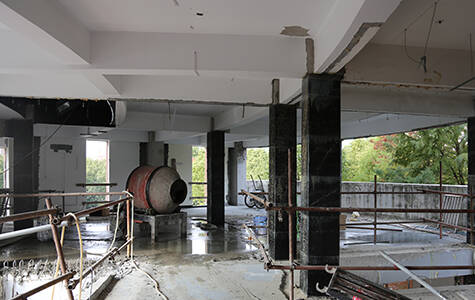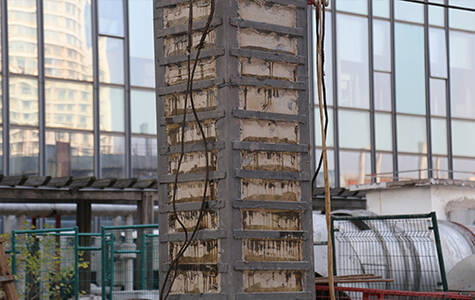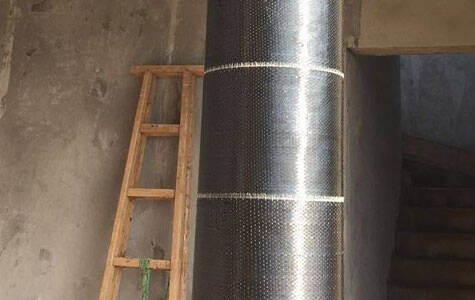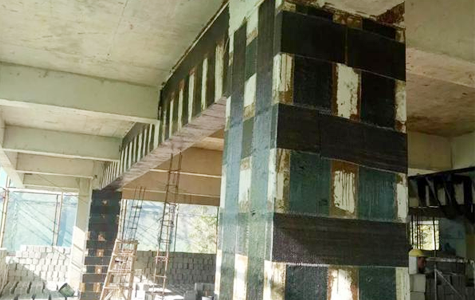Solutions
Horse Construction offers full range of structural strengthening materials with technical supports, documentation supports, products supports, project supports.
Why are there such regulations for concrete for structural reinforcement


<Specifications for Design of Reinforcement of Concrete Structures> In GB50367, there are three requirements for concrete used for structural reinforcement. Many people don't understand why a simple concrete has so many requirements? Let the editor of Shanghai HORSE give you a brief analysis
1. The strength level of concrete used for structural reinforcement should be one level higher than that of the original structure and components, and should not be lower than C20 level. Its performance and quality should meet the requirements of the current national standard "Specification for Design of Concrete Structures" GB50010.
Reasons for structural design specifications
The reason why the strength level of concrete used for structural reinforcement is higher than that of the original structure and components, and not lower than C20. It is not only to ensure that the interface between the new and old concrete and between it and the newly added steel bars or other reinforcement materials can have sufficient bonding strength. It is also because the volume of newly added concrete is generally small, the pouring space is limited, and the construction conditions are far inferior to the newly poured concrete of all components.
Investigations and tests show that the uniformity of the concrete poured in the small space formwork is poor. The concrete strength determined by the on-site coring may be more than 10% lower than the normally poured concrete, so it is necessary to appropriately increase its strength level.
2. Commercial concrete can be used as concrete for structural reinforcement, but the fly ash added should be Class I ash, and the loss on ignition should not be greater than 5%.
Reasons for structural design specifications
The fly ash used in engineering in the 1980s was of poor quality. The loss on ignition is too large, so that the shrinkage rate of the concrete mixed with fly ash may reach a level that is difficult to adapt to the original component concrete, which affects the quality of structural reinforcement. Therefore, the CECS25:90 standard stipulates that "the concrete used for reinforcement should not be mixed with fly ash".
However, as commercial concrete and high-strength concrete enter the construction engineering market in large quantities, this regulation is often questioned, and people have demanded that regulations take active measures to solve it. For this reason, after a special analysis and research on how to add fly ash to concrete for structural reinforcement, the following conclusions are drawn. As long as the I grade ash is used and the loss on ignition is limited to 5%, it will not have obvious adverse effects on the reinforced structure.


3. When polymer concrete, reduced-shrinkage concrete, micro-expansion concrete, steel fiber concrete, synthetic fiber concrete or shotcrete are selected for structural reinforcement projects, they should be adapted before construction, and can be used only after their performance meets the design requirements.
Reasons for structural design specifications
In order to make the concrete used for the reinforcement of the basement of the building and the structural foundation have the performance of micro-expansion, it is necessary to seek out the expansion agent that takes place in the cement hydration process, so as to offset the shrinkage of the concrete during the hardening process and play the role of pre-compression stress. .
For this reason, when purchasing micro-expansion cement or micro-expansion agent products, the manufacturer should be required to provide the expansion rate of the product during the cement hydration process and its mixing ratio with the cement. At the same time, the manufacturer should also be required to explain whether there will be a retraction problem in the later period of use, and provide a written guarantee of no retraction or a very small retraction rate. Because whether the expansion agent can exert pressure for a long time is directly related to the safety of the reinforcement structure.
You can find anything here you are in need of, have a trust trying on these products, you will find the big difference after that.

High strength carbon fiber reinforced polymer (CFRP) strip / laminate / plate for structural strengthening and concrete repair

High strength, unidirectional carbon fiber fabric pre-saturated to form a carbon fiber reinforced polymer (CFRP) fabric used to strengthen structural concrete elements.

High strength, unidirectional carbon fiber sheet pre-saturated to form a carbon fiber reinforced polymer (CFRP) sheet used to strengthen structural concrete elements.